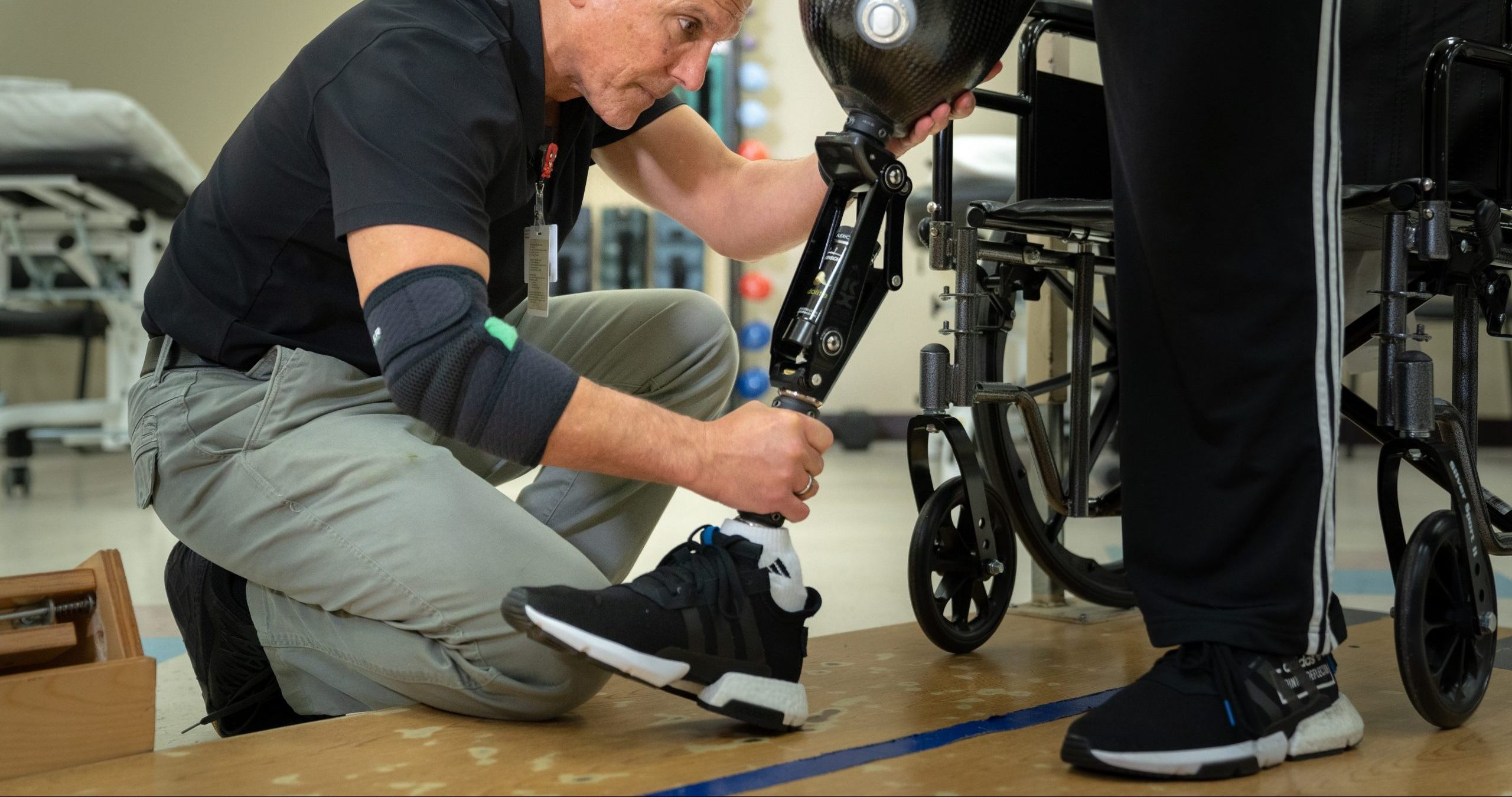What are the causes of amputation?
Diabetes and vascular disease
Diabetes and vascular disease account for 54% of all amputations and 55% of diabetic patients with amputation will undergo a second amputation within 2-3 years. Chronic and/or uncontrolled vascular compromise leads to tissue death in toes, feet, and lower limbs due to restrictions in blood flow.
Cancer-related amputation
Cancer-related amputations account for less than 2% of all amputations. Sarcomas are the leading cause of amputation in these patients. Sarcomas can affect soft tissue and bone leading to compromise of the surround structures, including blood vessels and nerves. Cancer related amputations are performed to reduce the spread of aggressive cancer.
Severe infection
Severe infection can lead to amputation as well. Blood poisoning caused by antibiotic resistant bacteria overwhelm the system. The restriction of blood flow can cause tissue to die causing the limbs to be greatly affected. MRSA bacteria can cause a severe condition caused necrotizing fasciitis, which is dangerous, and amputation is necessary for patient survival.
Congenital amputation
Congenital amputation refers to a missing or an incompletely formed limb in utero or at birth. Children born with incomplete or missing limbs may undergo surgical intervention and depending on severity of limb loss may receive a prosthetic device.
Types of amputation surgery
The approach to amputation depends on the reason for amputation. The reason for amputation is determined by the extent of damage to bone and tissue. Patients can also undergo bilateral amputations.
Upper extremity
- Partial hand amputation: part of the hand is removed
- Wrist disarticulation: removing the hand after separating it from the lower arm at the wrist
- Below the elbow amputation: removing part of the lower below the elbow through radius and ulna
- Elbow disarticulation: removing the lower arm at the elbow
- Above the elbow amputation: removing the lower arm and elbow and part of the upper arm by cutting across the humerus
- Shoulder disarticulation: removing the entire arm after separating it from the shoulder
- Forequarter amputation: removing a portion of the shoulder and the entire arm
Lower extremity
- Partial foot amputation: removing a portion of the foot
- Ankle disarticulation: amputation of the foot from the lower leg at the ankle
- Below the knee amputation/transtibial: removing the ankle, foot and a portion of the lower leg cutting through the tibia and the fibula
- Knee disarticulation: separating the lower leg from the upper leg at the knee
- Above the knee amputation/transfemoral: removal of the knee and lower leg along with a portion of the upper leg cutting through the femur
- Hip disarticulation: removal of the entire leg through the hip joint and removing it from the pelvis
- Hemipelvectomy: removal of the entire leg and part of the pelvis
Amputation Specialists at Brooks
The Brooks team consists of a Physical Medicine and Rehabilitation Physiatrist, a physical therapist, and a team of certified prosthetic providers to create customized care for each patient.
Brooks has a network of other medical care providers throughout the community to support and optimize amputee recovery and encourage return to the highest quality of life.
Healing and Recovery After Amputation
Healing is a progressive process post amputation. Our approach to patient care is unique to each individual with thoughts for goals and patient potential in mind. Our goal is to have each amputee patient return to their highest quality of life from playing with kids/grandkids or participating in rigorous workout routines and/or adaptive sports.
Post amputation recovery varies per patient. The residual limb remains bandaged, cleaned, and dry until sutures are removed. You will have follow ups with your medical team to check the surgical site.
Post bandage removal, your doctor will likely encourage you to use a shrinker sock to promote limb formation and reduce swelling of the residual limb. This process is vital as it helps to improve prosthetic fit by promoting a conical shape. You will gradually progress to prolonged wearing of this garment.
Rehabilitation will be necessary following amputation. This may include an inpatient rehabilitation stay, home health services, or directed directly to outpatient rehabilitation. The rehabilitation team will perform a comprehensive assessment and a plan of care established with the patient, caregivers, and family.
